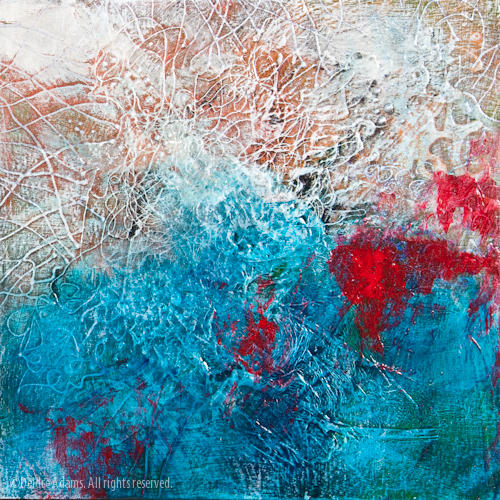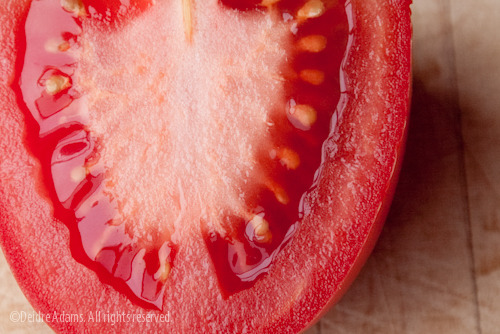Finally, a decision
 Untitled, 12 x 12 inches, acrylic on panel, ©2009 Deidre Adams.
Untitled, 12 x 12 inches, acrylic on panel, ©2009 Deidre Adams.
In my last post, I discussed my angst over having to finally settle on what kind of work I wanted to have in my Thesis/Portfolio show. A few days later, our class went to visit the site to get an idea of what the space looks like. While looking at one large wall, I got a flash of how cool it would be to have some very large textile pieces in the show. As I waited for everyone else to be finished with their mildly excited chattering and general milling around, I had a little daydream which in short order included a very clear vision of making (5) 6×4-foot pieces to be set close together, making a single statement. (Wikipedia asserts that that would be a “pentaptych,” but such an ungainly word shall have no place in my permanent working vocabulary.)
The textures, colors, and methods were all surprisingly well developed in my little reverie, and I started to make my plan a reality the very next day. I cut backs and batting pieces, and I went to the basement to go through all my old stash of random types of fabric, looking for those piles of silk scraps from the designer clothing castoff sales and the old silk blouses and shirts from Goodwill that I had once accumulated for some now long-lost idea. I spent many hours of every day of the following week cutting, tearing, ironing, painting, arranging, and basting to get my first piece, a prototype of sorts, somewhat in shape to continue. But I had only begun to put in some of the first, tentative stitches — some by hand, and some by machine. The reality of whether I would be able to complete 5 of these pieces by mid-April was seriously in doubt at this point.
Over this past weekend, I met with some friends and showed them my prototype as well as a couple of the Resonant State paintings. Granted, it’s very hard for others to get enthusiastic and be able to have a clear picture of your finished piece when they’re looking at something that’s just a bunch of scraps basted onto a backing, but the consensus was unambiguous: go with the paintings. After all, they’re pretty much done, save for some minor tweaking, so why spend the next couple of months in a state of extreme anxiety when there’s no need for that? If I really think about it, one of the biggest reasons I make art is because I find it immensely therapeutic, relaxing, and satisfying. Rushing to get something done for the sake of a deadline is antithetical to my process.
I had to admit I felt a great sense of relief once I began to let go of my new idea, even though it was, and still is, very precious to me. I’m still going to continue with these pieces in the future when the time is right. In a way, this is even better. I have all of the raw materials plus one piece pretty far along, neatly stored away for the future like a squirrel with a big pile of nuts. With this plus all the other ideas I have ready and waiting in the wings, I’ll never be stuck staring at the wall, wondering what I should work on. For me, this is better than money in the bank.





